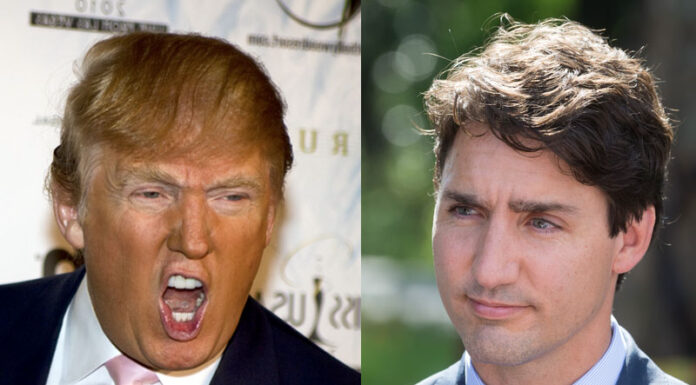President Donald Trump has escalated tensions with Canada, declaring it would “cease to exist” without U.S. support and should consider becoming the 51st state.
He issued these statements on February 2 via his Truth Social platform, claiming: “We pay hundreds of Billions of Dollars to SUBSIDIZE Canada. Why? There is no reason. We don’t need anything they have.”
This rhetoric came as the White House imposed new tariffs on Canadian imports—25% on most goods and 10% on energy products. Although the administration framed the measures as necessary to address illegal immigration and drug trafficking, critics questioned how such issues relate specifically to trade with Canada. The policy immediately drew intense backlash from business leaders, economists, and Canadian officials.
Prime Minister Justin Trudeau responded forcefully, announcing matching 25% tariffs on $106.6 billion worth of American products, targeting goods such as beer, wine, household appliances, and sporting equipment. “We don’t want to be here. We didn’t want this,” Trudeau stated, calling the White House approach “deeply divisive.” He urged Canadians to remain united and stand up for national interests, emphasizing that the tariffs were a direct response to Trump’s actions.
Mexico also found itself caught up in the crossfire. President Claudia Sheinbaum, facing newly imposed U.S. tariffs, secured a temporary one-month reprieve after agreeing to deploy 10,000 troops to the border. She vehemently denied White House claims that the Mexican government has ties to criminal organizations, calling such accusations “slander” and warning against any “intention of meddling in our territory.”
Public anger in Canada manifested through grassroots boycotts of American goods and a notable dip in U.S. travel. At some sporting events, fans reportedly booed the U.S. national anthem. Provincial authorities also took measures: Ontario officials announced plans to ban U.S. companies from bidding on future government contracts, going so far as to cancel an ongoing agreement with Elon Musk’s Starlink satellite internet service.
Economists warned the tariffs could harm both countries. According to some projections, U.S. households might see their costs rise by an average of $1,245 annually, while Canada faces a potential recession if the situation lingers. The dispute threatens a bilateral trade relationship valued at over $900 billion per year. The U.S. Chamber of Commerce predicted up to 2.6 million combined job losses should tariffs remain in place through 2025.
Canada planned its retaliatory tariffs in two phases, with the first C$30 billion beginning on February 4—mirroring the U.S. implementation date—and the remaining C$125 billion rolling out 21 days later. Ottawa also weighed non-tariff measures involving critical minerals and energy procurement, underlining how significant the energy sector is to the U.S.-Canadian partnership. Despite the lower 10% tariff on Canadian energy exports, Canada remains the largest foreign supplier of crude oil to the United States.
Diplomatic efforts have frayed. Canada’s ambassador to Washington emphasized that firm action is vital to uphold agreements, while former Bank of Canada and Bank of England Governor Mark Carney warned these measures would undermine U.S. credibility and heighten inflationary pressures. Conservative Leader Pierre Poilievre urged Parliament to reconvene for additional counter-tariffs or legislative moves, saying Canada must “stand up for the deal struck with the U.S.”
Major automakers like Ford and General Motors have already begun contingency planning in case supply chains are disrupted, warning that production in plants across Michigan, Ontario, and Quebec may be affected. Canada’s government estimates the tariffs could reduce its GDP growth by 1.2% by year’s end, with ripple effects likely spreading across North America.
Trump continues to argue that U.S. interests demand protection from “unfair trading practices,” while Canadian officials insist they will respond proportionately to any escalations. With both economies so deeply intertwined, observers warn that this clash, if prolonged, could do lasting damage to one of the world’s largest trade relationships.
Following the chaos, it was announced on February 3 that Trump had agreed to pause the tariffs on both Canada and Mexico after they promised to boost enforcement of their borders with the US.
After a tense few days that brought North America to the brink of a trade war, which could have severely impacted economic growth, driven prices higher, and jeopardized two vital U.S. alliances, a temporary cooling-off period has been established.
Proposed tariffs will be put on hold for at least 30 days to allow for collaboration, Canadian Prime Minister Justin Trudeau announced Monday afternoon on X. He stated that his government plans to appoint a fentanyl czar, classify Mexican cartels as terrorist organizations, and create a Canada-U.S. Joint Strike Force to tackle organized crime, fentanyl, and money laundering.








